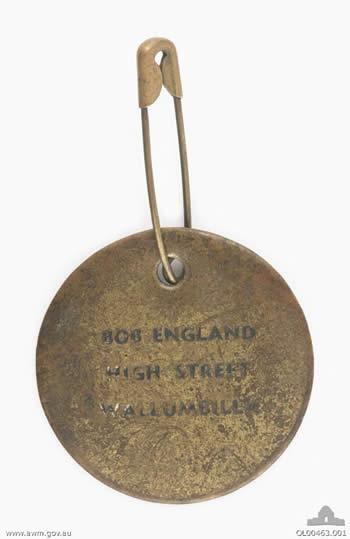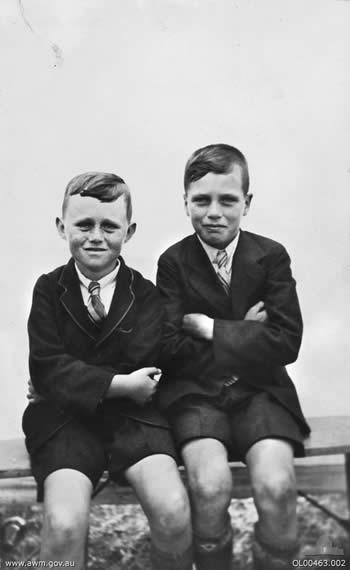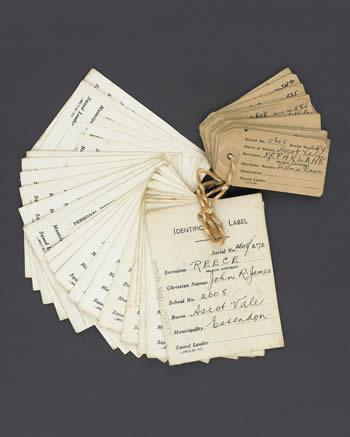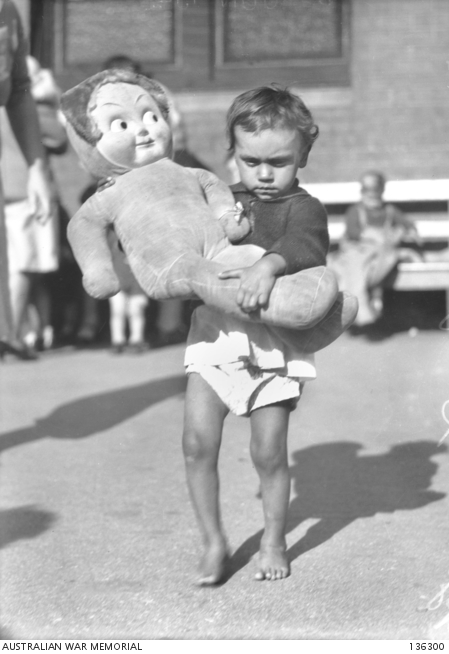Australia under attack: Identification labels
Schoolteacher Florence Clemson from Ascot Vale State School in Melbourne filled in these labels for her pupils as part of the school’s evacuation plan. In the event of air raids or threat of invasion, it might have been necessary to evacuate the children. Teachers made a large label for each child and a smaller one for their luggage.
Bob England
George Witt, a 63-year-old Queensland Railways guard at Roma, made identity discs for his grandchildren. One of his grandsons, Bob England, remembers his mother “kept this tag pinned to my underclothes until the threat of invasion had passed”.

Identity disc (private collection)

Bob England (left) and his school friend Keith Byrnes in 1942 (private collection)
Freda Glyn and her doll
Following the Japanese thrust into the Pacific, civilians were encouraged to leave the population centres of northern Australia that were likely to become targets. Women and children were given priority. Evacuations increased after the bombing of Darwin and Katherine.
Freda Glyn was one of a group of 40 Aboriginal children evacuated from the Alice Springs area. Freda and her fellow evacuees, including her mother and sister, went via Melbourne to a Church Missionary Society evacuee camp in the Blue Mountains. She was presented with the doll at Spencer Street railway station in June 1942.

Identification labels


